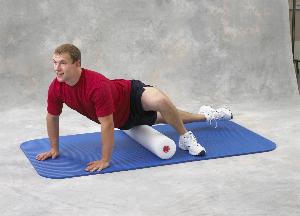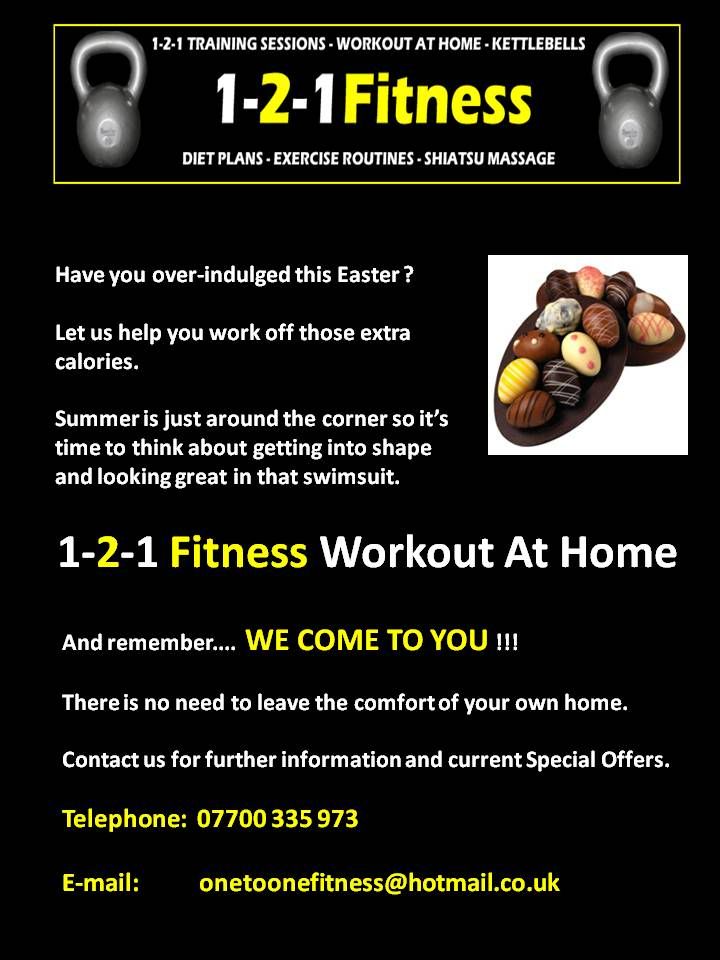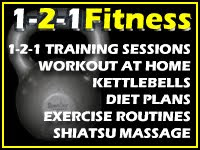
Key #3:
Exercise
You will lose fat by dieting alone, but not as effectively as you would using a calorie controlled diet and exercise plan. If you just dieted, you would end up as a smaller version of yourself.
Exercise helps you to build muscle (which helps you to burn more calories and lose more fat in the process), as well as helping you feel good about yourself, and providing a way to destress. The FITT and SOAP principles should be applied to your exercise program.
The FIIT principle:
Frequency: The number of training sessions completed in a given time period.
Intensity: The level of exertion that you are training at - i.e. if you are training for basic strength you will be using 80-90% of your one repetition maximum.
Time: How long the session lasts for - i.e. resistance training should last no longer than 45-50 minutes.
Type: What mode of exercise is being performed - i.e. aerobic, anaerobic, strength, power, etc.
The SOAP principle:
Specificity: Training you in a manner specific to producing the training adaptation or goal achievement desired - i.e. you must be training for fat loss. "Specificity also relates to the athlete's sport season. As an athlete progresses through the pre-season, in-season, and postseason, all forms of training should gradually progress in an organized manner from generalized to sport specific" - i.e. if you are an athlete your off-season would be general conditioning, progressing to strength and power work, then speed, and eventually to sports specific exercises. "The more similar the training activity is to the sport movement, the greater the likelihood that there will be a positive transfer to that sport".
Overload: "Refers to assigning a workout or training regime of greater intensity than the athlete is accustomed to. Without the stimulus of overload, even an otherwise well-designed program greatly limits the athlete's ability to make improvements. Overload training principles ensure that the muscles involved in the selected exercises are those that the sport relies on and that the loads are sufficient to challenge the athlete to become stronger, larger, faster, and more resistant to fatigue" - i.e. if you are training for strength, then if you do not consistently increase weights lifted during resistance training, then you are not overloading the muscles enough to get stronger. It is only when the body is consistently pushed that gains are made.
Adaptation: Training must be continually progressing via overload; otherwise [positive] adaptations can be lost quickly and performance can begin to decline, with fitness and conditioning sometimes returning to its initial state - i.e. if there was no periodization to your training and you perpetually did the same thing, then your body would stop making adaptations and progressing.
Progression: "The intensity of the training must become progressively greater. Progression, when applied properly, promotes long-term training benefits" - i.e. this is why you must change your training program every 4-6 weeks, to ensure that you are providing new challenges and continually getting results.
The best exercise program for losing fat is one that includes weights, cardio (mostly in the form of high intensity training), and flexibility (to help your muscle flexibility and joints).
Resistance Training:
If you are a beginner, you can start off with 2-3 full-body workouts each week. Otherwise, I would recommend a 3 or 4 day split. Each muscle group should be rested for at least 1 day before training that muscle group again. This gives it plenty of time to recover before the next training session.
Exercises that you should be doing are multijoint, compound exercises, as they use more than one muscle, and are the most effective for not only building muscle, but also in burning fat, because they are recruiting more of your body to perform the exercise than isolation exercises (these are a waste of time unless you are a seasoned lifter and are looking to target specific muscle groups).
The best compound exercises that you can do are the squat and the deadlift, as they use pretty much every muscle in your body. Other compound exercises that are good to include are the bench press, shoulder press, pullups, dips, and calf raises (the only isolation exercise that's really good).
You should be performing between 25-40 repetitions per muscle group, consisting of 3 sets of 10 repetitions for example per exercise, with a 1 minute recovery in between the sets (the shorter the recovery, the lighter your weights will possibly be, which will give you a 'cardio' workout as well).
Be sure that you always use good form for every exercise; otherwise you are putting yourself at risk for injury. All reps should be controlled and with good form. It is not about how much you can lift, but how well you lift. You will get stronger as you keep at it (although maybe not so much when trying to lose fat, but this depends on the individual).
You should never spend longer than 45-50 minutes in total lifting (i.e. your session should take that long from the time you walk in to the time you walk out, excluding if you do a warm-up - and this is strictly your own preference); otherwise you become too catabolic and can end up losing muscle.
You also need to change your weights program around slightly every 4-6 weeks, just so that your body does not get used to it and stop adapting. This can be as little as changing the order of exercises in a session or the number of sets and/or reps that you do for an exercise (and it only needs to be one exercise changed at a time, small adjustments over the weeks).
Here's a sample circuit plan for a beginner. This is a very basic routine, designed to get you 'used' to resistance training and condition your body for it, building a base to work on, whilst also targeting your goals. After 4-6 weeks you will need to change your program.
Do an easy 10 minute warm-up. Select weights that you can do for said reps on each exercise (but not too much more), and use these for the entire session.
Complete exercises in order from 1-7, with minimal recovery (ideally it should be moving from one exercise to another; but if you are a beginner 30-60 seconds will be ok). At the end of one set (i.e. 1-10) rest for 1 minute, and then repeat. Stretch full-body for 5 minutes after your session. This should take ~45 minutes in total.
Every week your weights should increase (i.e. not on all sessions, but keep weights the same for a week, and increase as you can for the next week's sessions), so that you keep challenging your body.
Beginner Fat Loss Workout Program:
Barbell Squats: 2 sets of 15 reps
Romanian Deadlifts: 2 sets of 15 reps
Standing Calf Raises: 2 sets of 15 reps
Pullups: 2 sets to failure
Pushups: 2 sets to failure
Dumbbell Shoulder Press: 2 sets of 15 reps
Crunches: 2 sets to failure
I highly recommend getting a personal trainer if you are a beginner, so that you can be shown the correct technique (very important) for each exercise.
Personal trainers can be there with you for your first few sessions, to determine starting weights, as you get acquainted with resistance training. They also provide motivation, support, and a source for accountability.
A personal trainer will also assist in creating a workout for you and should offer nutrition advice.
Cardio
Whilst long, slow cardio burns calories, you require long periods of time to do it. Some even recommend doing two hours of cardio a day, or double cardio sessions, to lose fat, but it's simply not necessary.
The most effective way to burn fat through cardio is to do either:
Interval training
Cardio at a higher intensity (i.e. just going out and running as fast as you can over a certain distance, instead of 45 minutes at a 60% max heart rate).
Forget about the 'Fat Burning Zone'; it does not matter what fuel you use during cardio, as your body will burn other substrates during the rest of the day (i.e. if you burn fat during cardio it will use carbs the rest of the day, and vice versa).
If you feel that you need to do more cardio, then you can do brisk walks every other day, or perhaps a run (but no more than 30 minutes; after 30 minutes of running you are very catabolic and are likely to lose muscle, which you do not want happening). Skipping, stair sprinting/running, or rowing, are the next highest calorie burners after sprinting.
Flexibility:
Stretch for 10-20 minutes per day, preferably after you have done either cardio or weights, while your muscles are still warm, as this decreases the risk of injury. Stretching makes sure that you can move more freely and easily and helps elongate the muscles, ligaments, and tendons.
Remember that when it comes to exercise more is not always best!
You want maximal results for minimal time. You also need to remember that some of this is experimental, and about finding what works best for you, since everyone is different and responds differently to different exercise programs.
Conclusion
The first step to successful fat loss is to set a goal. Your goal should follow the principles of SMART goal-setting. Once you have set your goal, then you need to look at your nutrition.
Your diet should be individualised for you, to ensure that you get the results that you want in the timeframe that you want them. Your diet should follow the principles of adequacy, balance, energy control, nutrient density, moderation, and variety.
The last piece of the fat loss puzzle is exercise. Your exercise program should follow the FITT and SOAP principles; and include resistance training (3-4 times weekly), cardio (predominantly in the form of high intensity sessions), and flexibility (to aid your joints and muscles).
As long as you are eating right for you for fat loss, doing weights 3-4 times per week, doing cardio 2-3 or more times per week for 12-30 minutes per day (depending on the intensity; the higher the intensity the shorter you do it for!), and allowing your body to recover (this is very important; if you do too much, then your body will not be able to recover properly and you will not get the results you want, since your body only adapts and gets results in the recovery time!), then you will successfully lose fat!
1-2-1 Fitness can help you start your journey to a leaner, fitter body.
Please contact me for further information.
















